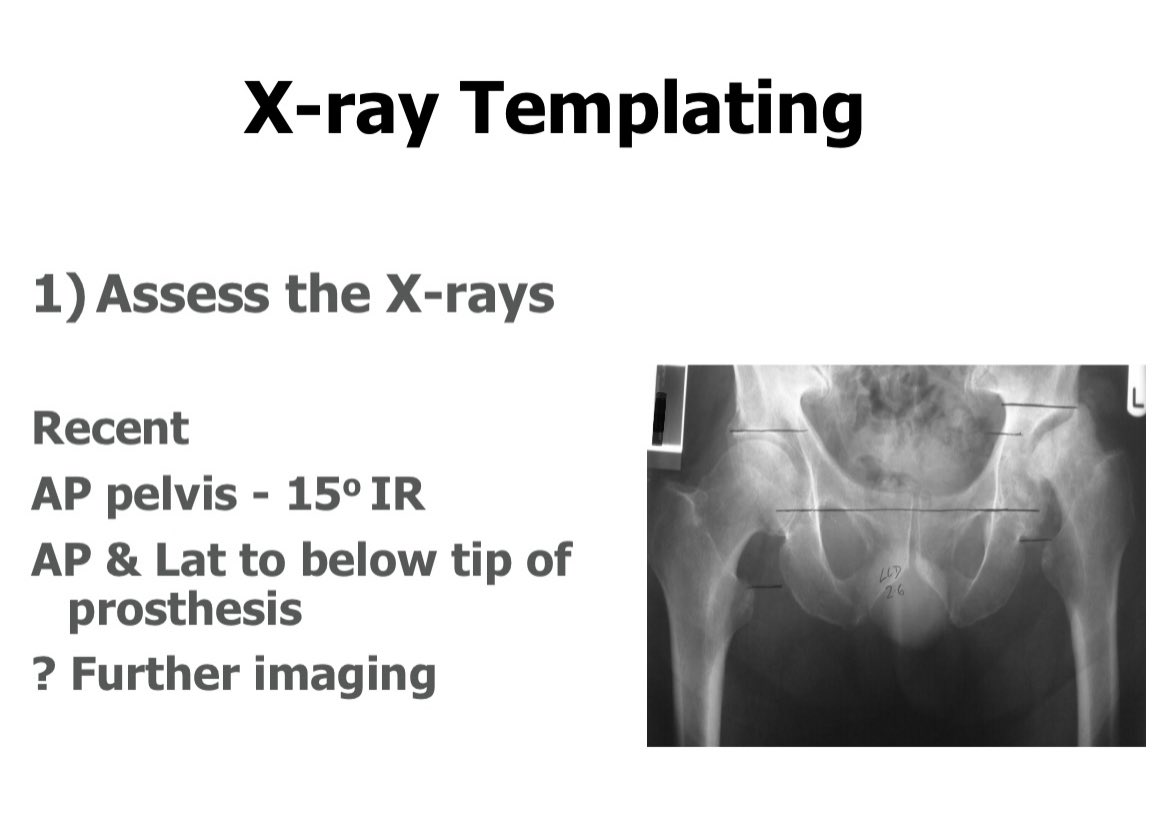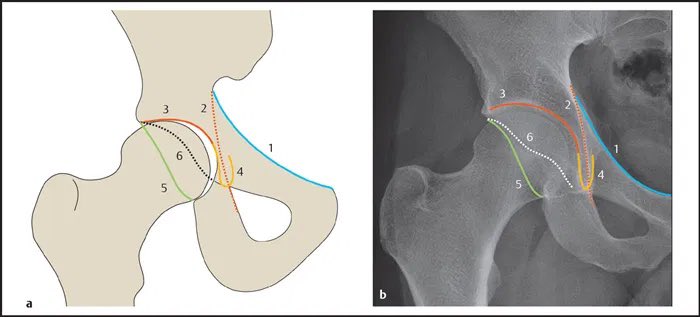
51/365 Good planning is essential and to perform good planning you need good images. Don’t settle for less and accept what you know isn’t good enough. Sometimes the radiography dept don’t understand what you need. Time spent with them is time well spent.
https://twitter.com/exeterhipunit/status/1349447291183230977
‘Recent’ is a relative term. Typically we say within six months but any change in symptoms or exam finding at preop probably deserves a repeat image. 

Internally rotating the legs (toes inwards) improves the true AP image of the proximal femur. The normal femur is anteverted so assessing offset is difficult. You never over estimate the offset. If anything it will be under. Err on the side of increasing offset. 

And request an ‘AP pelvis for hips’ not just an ‘AP pelvis’. Usually we don’t need to see the whole iliac crest but we do need to see the whole proximal femur where our implant will end up. 

And decide on further imaging. Long leg films for those with a history of cancers that can metastasise to bone. CT socket defects if in doubt. MRI to rule out spinal pathology or occult bony/ soft tissue pathology. 

• • •
Missing some Tweet in this thread? You can try to
force a refresh







